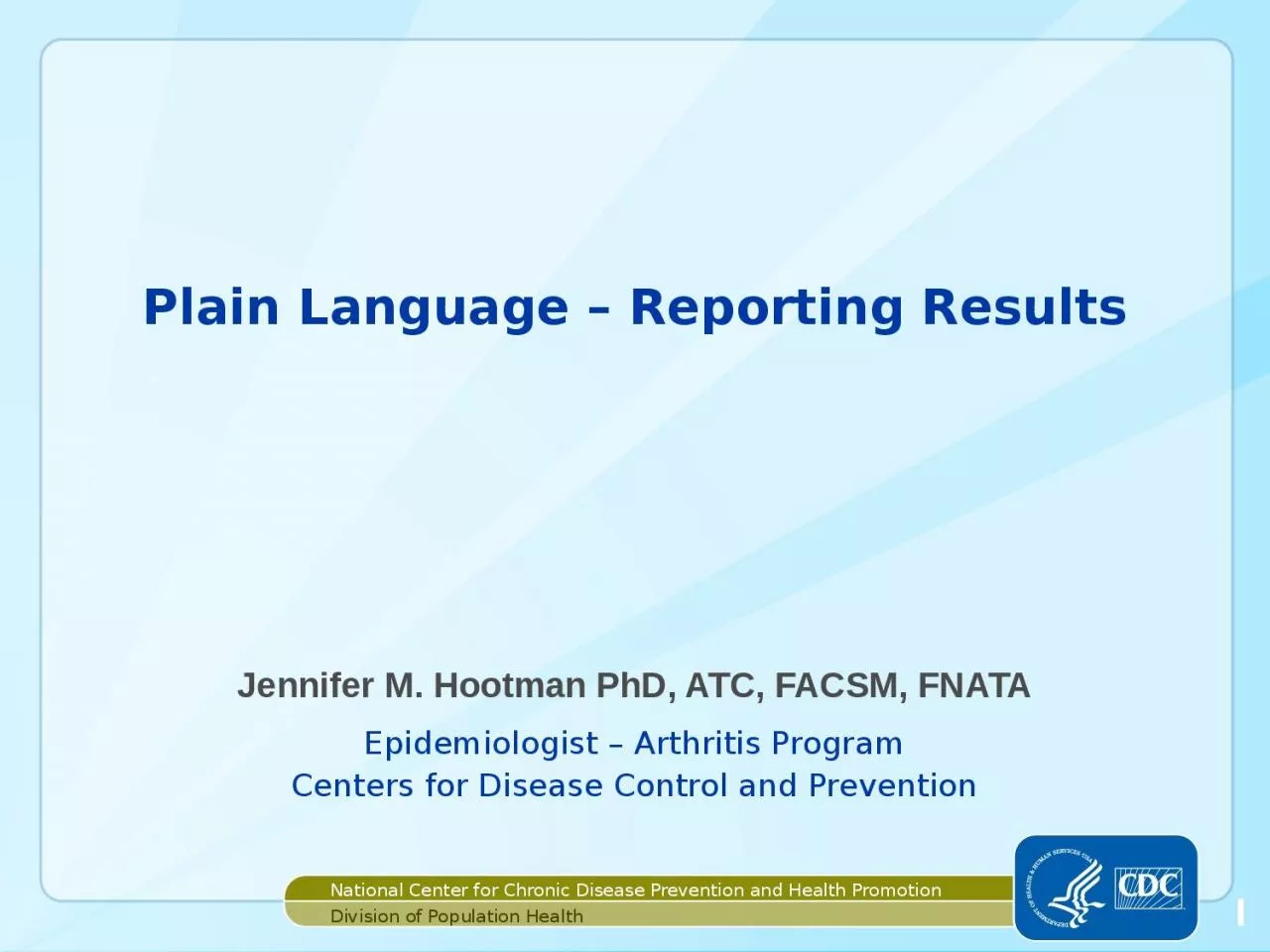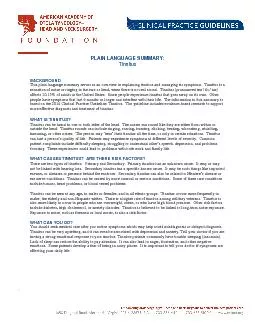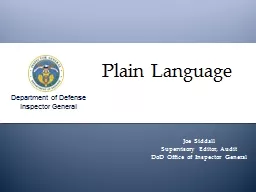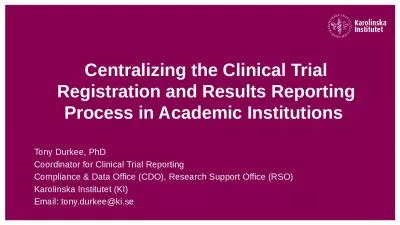PPT-Plain Language – Reporting Results
Author : christina | Published Date : 2024-01-29
Jennifer M Hootman PhD ATC FACSM FNATA Epidemiologist Arthritis Program Centers for Disease Control and Prevention National Center for Chronic Disease Prevention
Presentation Embed Code
Download Presentation
Download Presentation The PPT/PDF document "Plain Language – Reporting Results" is the property of its rightful owner. Permission is granted to download and print the materials on this website for personal, non-commercial use only, and to display it on your personal computer provided you do not modify the materials and that you retain all copyright notices contained in the materials. By downloading content from our website, you accept the terms of this agreement.
Plain Language – Reporting Results: Transcript
Download Rules Of Document
"Plain Language – Reporting Results"The content belongs to its owner. You may download and print it for personal use, without modification, and keep all copyright notices. By downloading, you agree to these terms.
Related Documents














